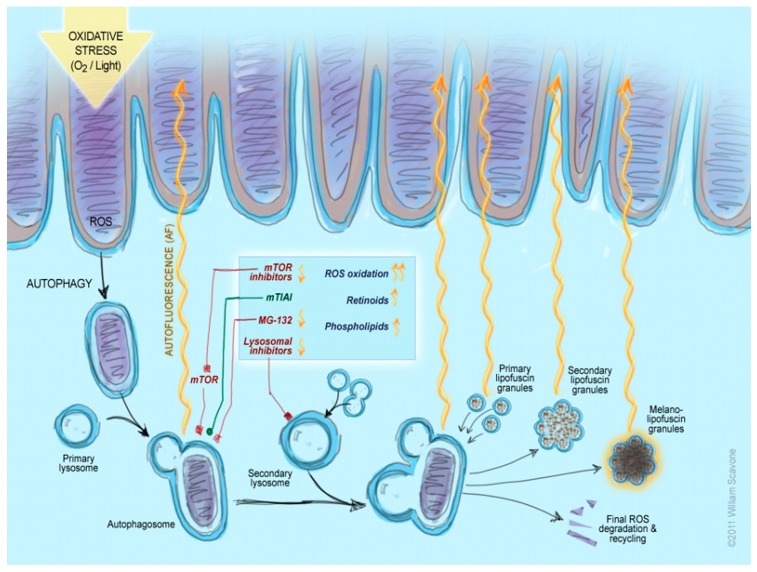Figure 5.
RPE lipofuscin biogenesis and degradation pathways modulated by mTOR activity. Schematic representation of the mTOR modulation on RPE lipofuscin biogenesis and degradation pathways, based on the results from the present study. Initial degradation of the rod outer segment material occurs with the participation of autophagosomes, including their proteosome component. This part of the process can be down-regulated by the mTOR complex or by proteosomal inhibitors, and the application of the latter could increase lipofuscin-like autofluorescence (LLAF). Suppression of mTOR activity (e.g., by application of rapamycin) can stimulate the autophagosome activity and this can lead to a more complete degradation of the material, resulting in decreased LLAF. Similarly, the application of mTOR-independent autophagy inducers can decrease LLAF. In contrast, either direct lysosome inhibition or an oversupply of some ROS components, like phospholipids or retinoids, can lead to increased LLAF. Oxidation of ROS material can also lead to LLAF increase. Abbreviations: Mtch—mitochondrion; Prt—proteasome; mTIAI—mTOR-independent autophagy inducers. The illustration was generated by William Scavone (used with permission).

